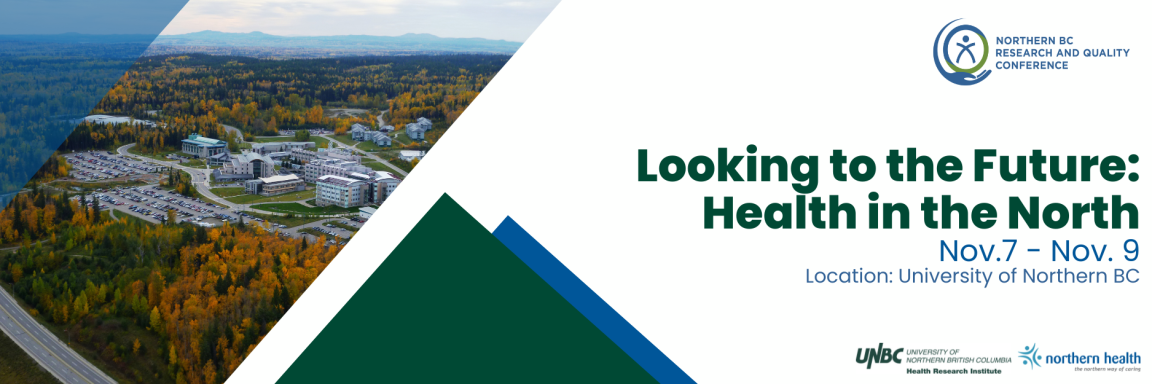
Concurrent Session I
Date: November 8
Time: 3:15pm - 4:15pm
Location: University of Northern BC, 6-305 (Max 19 people)
Theme: Indigenous Health and Wellness
Amanda Wagman
Title: Reducing Early Childhood Caries Through Reventative Dental Hygeine Care in Rural First Nations Communities
Objectives: Reduction of ECC through implementing a preventative dental hygiene program, building rapport and trust with the community, all through use of a culturally competent dental hygiene practitioner (DHP).
Background: Rural Indigenous communities present with higher rates of Early Childhood Caries (ECC) and oral diseases compared to the general population. 1,2,3 Some of the barriers to accessing oral health care are due to a lack of health care providers in the area, geographical distances, difficulty scheduling appointments, cost of care, decreased oral health knowledge, and food insecurity.3,4,5 Additionally, Indigenous Peoples have suffered immense discrimination and stigmatization throughout history, and this ongoing issue has resulted in this population straying away from oral health providers.1 This has resulted in poor oral health, which negatively impacts the overall health and development of the community.
Methods: Collaboration through First Nations community members, Health Directors, teachers, DHP, Team Leads of Northern Health. Engagement came via an invitation from the preschool teacher in Kitkatla. Baseline oral screening data will be collected on all children 0-6 years of age and be collated with data obtained from dentists who travel to Kitkatla. A preschool and elementary school toothbrushing program will be established in addition to fluoride varnish applications four times per year.
Terri-Leigh Aldred
Title: The UBC Drone Transport Initiative: Addressing Health Inequities in Rural and Remote First Nations Communities Using Drone Technology
Objective: To investigate the feasibility of using autonomous bidirectional drone technology to address inequities in access to health care services and supplies experienced by many rural and remote First Nations communities.
Methods: A short transport route was established between the Stellat’en First Nation and the Village of Fraser Lake. A combination of surrogate materials and medical goods and supplies were carried by drones between the two communities over the course of an entire year beginning in October of 2021 so as to gain a better understanding of the specific transportation- and weather-related considerations associated with conducting drone flights over four seasons in North-Central BC.
Person/Family/Community Partner Engagement: The project was conducted in partnership with the aforementioned communities, as well as other health system, academic and technology partners. Communities were engaged and directly involved in project planning and oversight and in the development of objectives based on community health priorities, as well as identifying specific areas of concern regarding the project.
Results: The project held numerous community engagement and information-sharing events (including STEM events for youth), and successfully built strong relationships. Over 1200 flights were carried out, over which valuable data about weather-related operational limits of drones and cargo temperatures were collected. The project also contributed significantly to the development of Transport Canada’s drone transport policies regarding the transport of pharmaceuticals and other dangerous goods, as well as receiving approval for beyond visual line of sight operations, critical for drone flights in rural and remote contexts. A comprehensive project evaluation framework was also completed to identify and examine project learnings through use of surveys and interviews with community and stakeholders.
Conclusion: Drone technology may hold the potential to help address health inequities experienced by rural and remote First Nations. Its successful implementation, however, can take place only through engagement and partnership with these communities.
Kinwa Bluesky, Kate Buium
Title: Indigenous Child Development and the Child Development Monitoring System
Aim: Support audience in understanding how the Child Development Monitoring System collects population-level data about multiple stages of Indigenous children across BC.
Description: An hour-long workshop to introduce participants to how the Child Development Monitoring System gathers information on critical perios of Indigenous children's development, exploring individual, family, and community factors from a diversity of perspectives: parents, teachers, and children themselves.
Objectives: Raise awareness about how these childhood questionnaires support the collection of population-level data about Indigenous children's outcomes, experiences, and environments that are needed to address the question: "What are the differences that make a difference?" Participants will learn how to place a disaggregated-data request for Indigenous children through their School District Indigenous Education Council, Indigenous Governing Body and/or Indigenous-led organization.